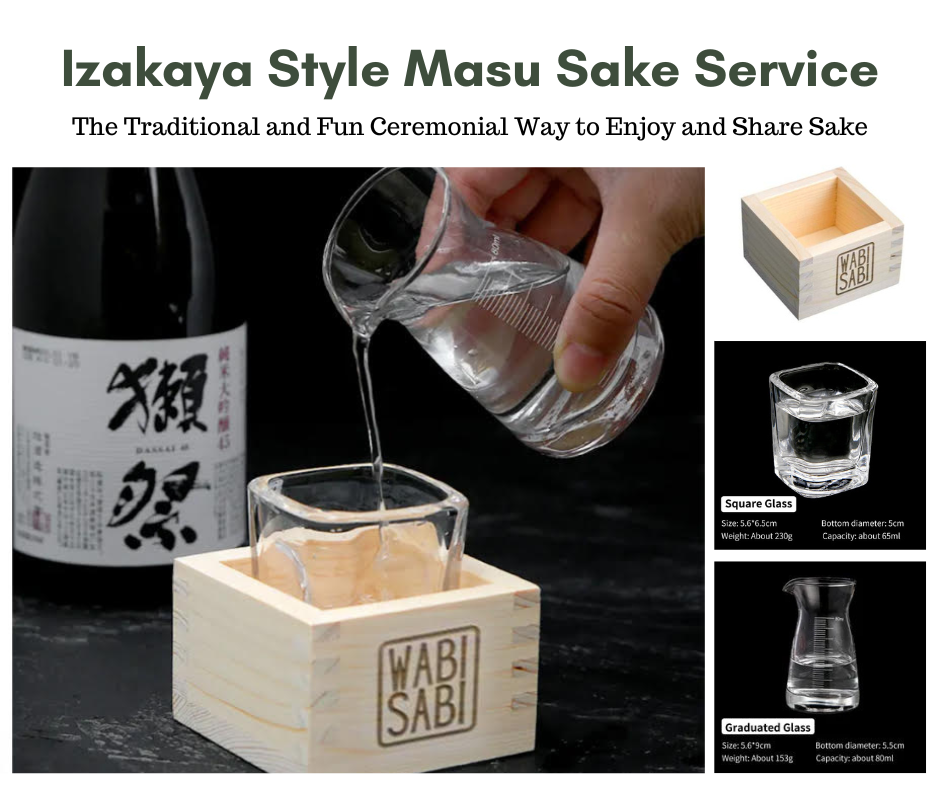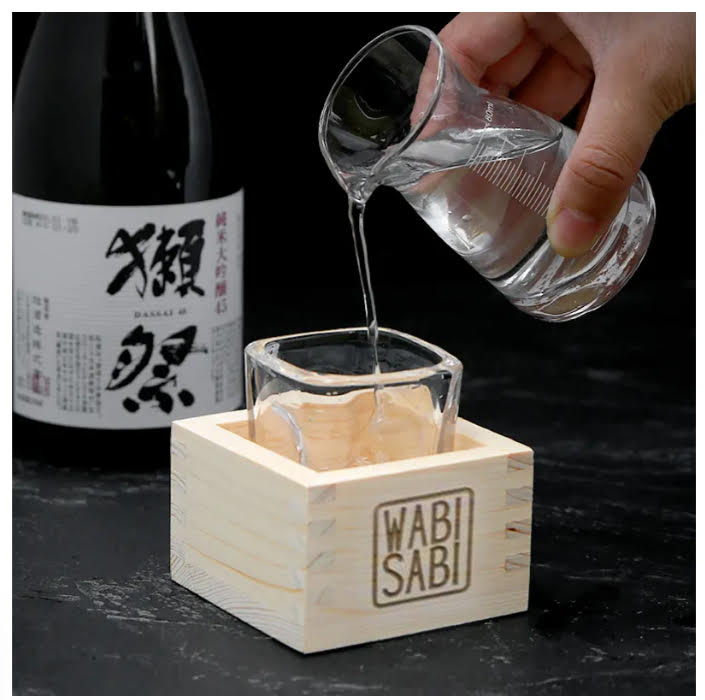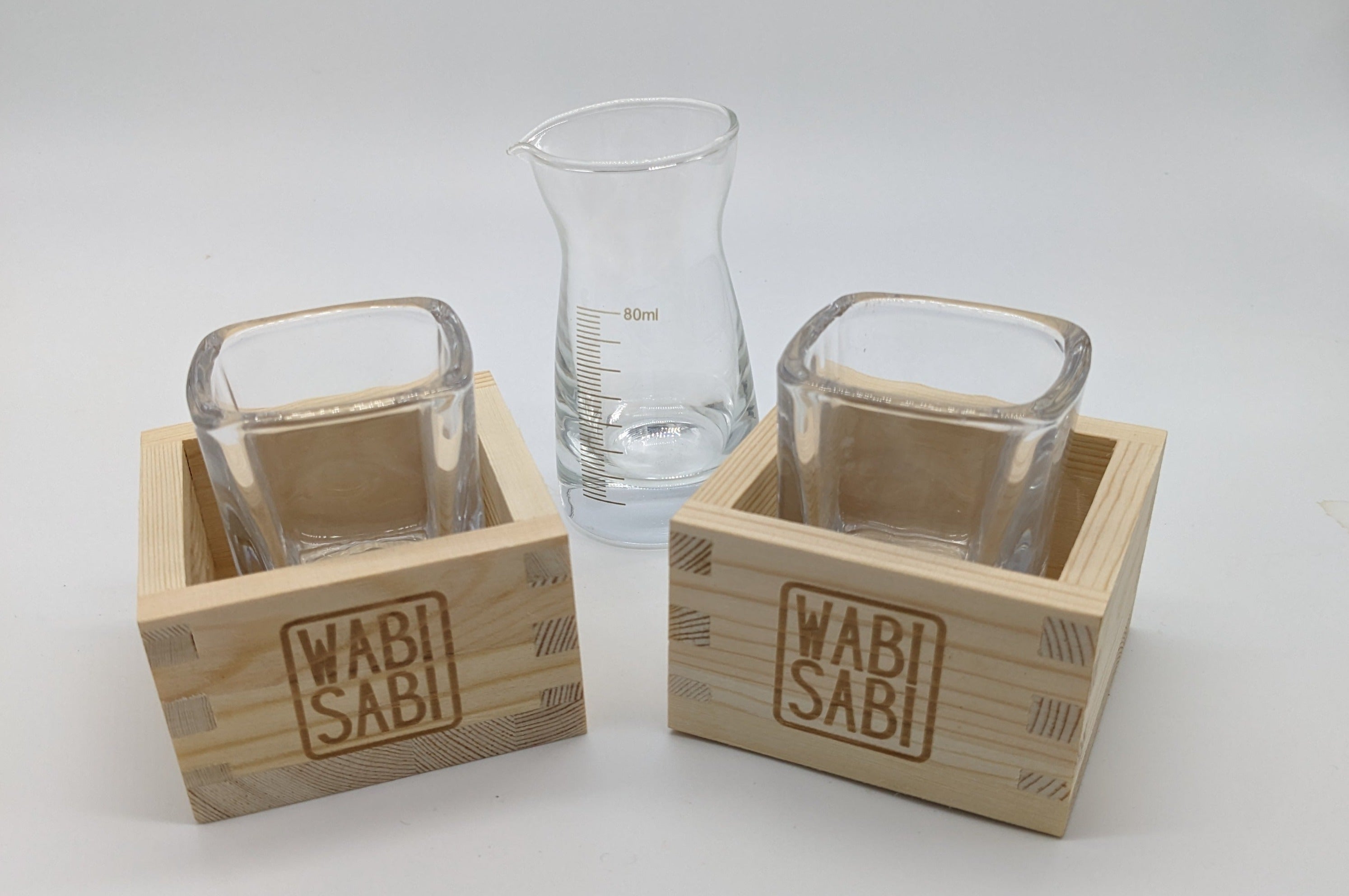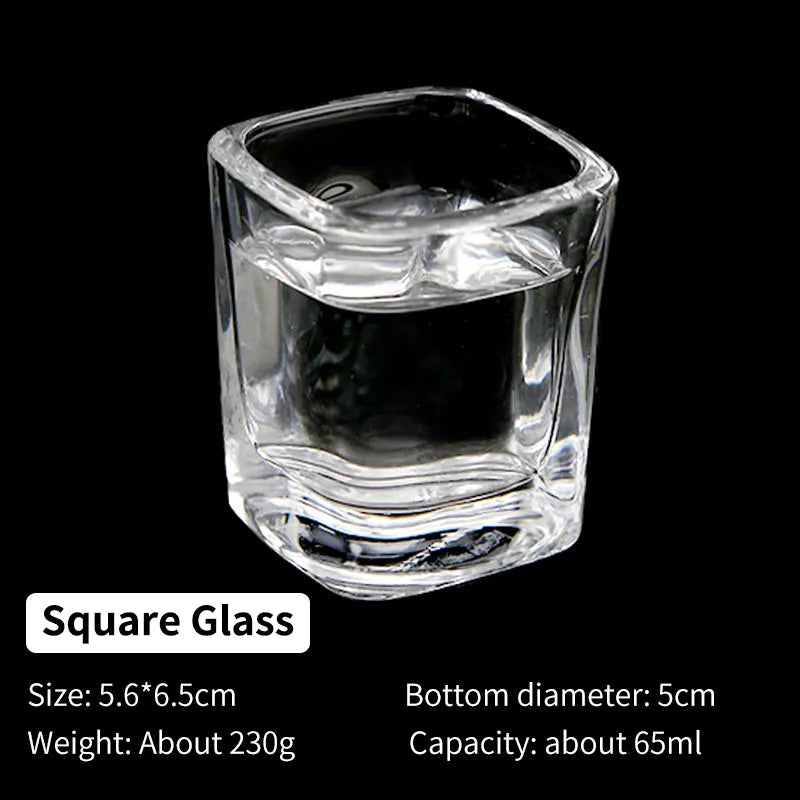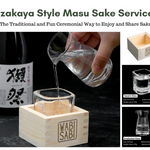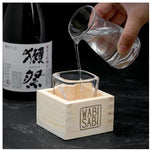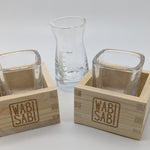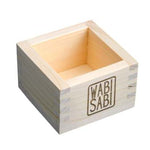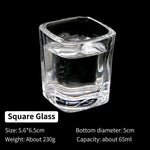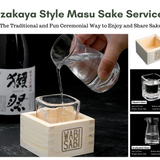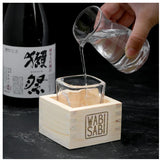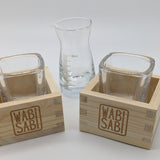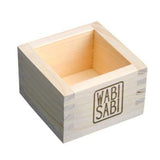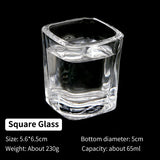
Sake Service for "Masu no Sake" a Traditional Abundance Ceremony
- Description
 Izakaya Style - "Masu no Sake"
Izakaya Style - "Masu no Sake"
The relaxed Izakaya Masu Sake Ceremony, also known as "Masu no Sake," is a traditional Japanese ritual for serving and enjoying sake, a Japanese rice wine. This ceremony is rich in cultural significance and has distinct procedures and symbolism associated with it.
- The ceremony begins with the selection of a traditional wooden sake cup called "masu." The masu is typically made of hinoki (Japanese cypress) or cedar wood and is often adorned with intricate craftsmanship or meaningful patterns.
Meaning and Symbolism:
- The use of the masu carries deep symbolism. Traditionally, the masu cup represents humility, as it's an unpretentious and natural vessel for the sake.
- The box-like shape of the masu represents a measure of rice, symbolizing a bountiful harvest and prosperity.
- The fragrant hinoki or cedar wood imparts a pleasant aroma to the sake, enhancing the overall sensory experience.
Serving the Sake:
- Sake is poured into the masu cup until it overflows. This slightly provacative act, seeming at first glance to be waste, quietly symbolizes abundance and generosity.
- The overflow of sake into a saucer beneath the masu cup not only catches any excess liquid but also adds to the overall aesthetic of the simple ceremony.
Etiquette and Tradition:
- The ceremony often involves a learned host, who pours sake for the guests, or a designated pourer who demonstrates the proper technique.
- After the sake is poured, the guests often exchange words of gratitude, offer a brief toast or share a moment of appreciation of each other.
- It is customary for the guests to take the masu cup in both hands before sipping the sake, showing respect and appreciation and reverence of and for present time.
Variations:
- There are subtle variations of the ceremony, with some involving the use of a square wooden saucer (sakazuki) for sipping the sake instead of a masu.
- The style and procedures of the ceremony may also differ depending on the region and the occasion.
Occasions:
- The Izakaya Masu Sake Ceremony is often associated with celebratory events such as weddings, New Year's festivities, and traditional festivals.
- It can also be part of a more formal dining experience or a way to honor special guests.
Modern Adaptations:
- While the traditional ceremony remains popular, it has also seen modern adaptations, with sake served in a variety of vessels, including glassware and ceramic cups.
The Izakaya Masu Sake Ceremony is a symbolic and respectful way to enjoy sake. It celebrates Japanese culture, craftsmanship, and the idea of sharing the spirit of hospitality with guests. The use of the masu cup and the overflow of sake signify generosity and the hope for abundance and good fortune, making it a cherished tradition in Japan.
Traditional Handmade Masu Gems
Handmade Hinoki Masu Cups were traditionally used as measures for rice....One standard Masu Cup of dry rice per person was a traditional portion. In many Japanese kitchens one finds a masu cup stored in the rice box for convenience. Over time Masu became popular containers to use for serving cold sake. Then masu started appearing in different sizes and being used as desk or kitchen organizers, containers for garlic, seeds or nuts; cool serving bowls for ceviche, ice cream or sorbet; or for a flower arrangement for table, window or shelf.
Classic tight finger joinery makes these durable and attractive. Unfinished natural wood, it is recommended these be hand rinsed and hand dried. Masu measures 3" x 3" x 2" ht

